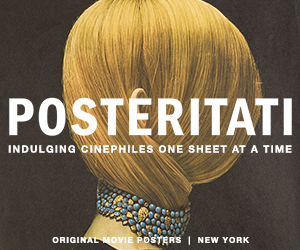A horror movie only needs one good idea to work—a potent allegory, say, or a specific anxiety to explore. Together, the feature debut of writer-director Michael Shanks, never settles on what it wants to be about, which means it never amounts to more than its high concept: a curse that causes one couple’s bodies to meld.
It’s a great conceit, with abundant potential. But the movie gets off to a shaky start by failing to flesh out, so to speak, the central couple. We learn in broad strokes that Tim (Dave Franco) and Millie (Alison Brie) have been dating for years—she has been plugging away as an elementary teacher while he’s been hanging onto dreams of a rock career. Millie is clearly more into the relationship than he is, delighting when their outfits inadvertently match and proposing to him, without warning, in front of a room full of friends. Before we learn much more about their dynamic, Millie and Tim move to an isolated, woodsy community for her new teaching job and unwisely drink from a mysterious pond while on a hike.
I haven’t seen much of Brie’s work, but the schoolmarm quality she had on Mad Men is amplified here, as Millie tells Tim when to shower and chides him for using too much data on their phone plan. The idea of a body-horror movie about a literally clingy girlfriend is icky, in a few ways, but at least such an enterprise would have a clear—if likely misogynistic—reason for being. Together, however, drops this notion as the curse—for reasons that are unexplained—turns Tim into the needy one. Having confused the relational allegory, the movie then skitters over other intriguing notions that arise. Tim avoids physical intimacy with Millie; perhaps the curse represents a fear of sex? We hear about a traumatic event related to his mother’s mental illness; might there be a connection there? There are also nonbinary implications to the premise, which are really only touched on in the final moments. Oh, and there’s a cult subplot for good measure.
Ultimately, Together is less interested in these thematic possibilities than the grisly visuals that its central premise allows for: Millie’s hair spreading down Tim’s throat as they sleep, for example, or the use of a Sawzall when their forearms meld. Body horror, however, is only truly effective when it’s about something beyond the blood and gore. Think of David Cronenberg’s The Fly and the way it works as a meditation on mortality. Or Julia Ducournau’s Raw as a consideration of the insatiable human appetite. Last year’s The Substance, from Coralie Fargeat, was almost too committed to its thesis about the horrors of aging as a woman in Hollywood. But at least it had focus. Together, like The Substance, eventually goes off the deep end, but without doing the work.
(7/31/2025)



